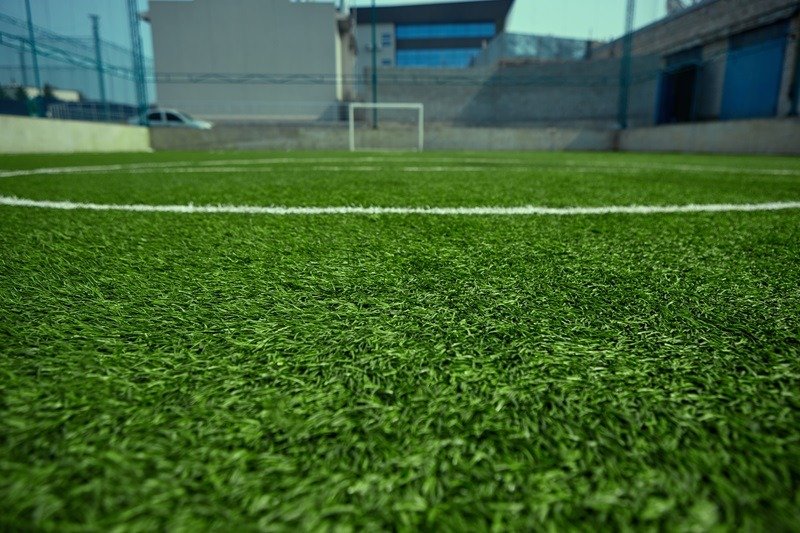Have you ever puzzled over the effortless and pristine lawns that seem to defy all weather conditions? Or perhaps you’re dreaming of your own perfect lawn, without the muddy mess during rainy seasons, or dry patches during the summer? Welcome to the world of synthetic grass – a game-changer for homeowners who prioritize both aesthetics and functionality.
Synthetic grass, also known as artificial grass or turf, is highly versatile and has transformed many homes, playgrounds, sports fields, and commercial spaces. But how exactly do you install and maintain it? We will delve into these queries in this comprehensive guide, discussing everything from the installation process, and the essential maintenance tips, to the pros and cons of choosing synthetic grass.
Why Opt for Synthetic Grass?
If you’re still on the fence about investing in synthetic grass, let’s shed some light on its advantages. First, synthetic grass is incredibly low-maintenance – there’s no need for regular watering, mowing, weeding or fertilizing. This can free up significant time and resources in the long run. Second, it’s an excellent choice for areas prone to extreme weather conditions, as its quality and appearance will remain unscathed. Third, if you have pets or kids, synthetic grass offers durability and a mud-free environment, making it safer and cleaner for play.

How to Install Synthetic Grass?
Installing synthetic grass requires preparation, accuracy, and patience. First, remove the existing turf and level the area. Second, lay a base of crushed rock for drainage, followed by a layer of builders’ sand for stability. The synthetic grass roll is then laid on top and secured with landscape staples or nails. Lastly, infill material is brushed into the grass to provide support and create a natural appearance.
Common Mistakes During Installation:
Pay attention to the common pitfalls during installation. For example, insufficient levelling can result in uneven surfaces, which makes the lawn less aesthetically appealing and possibly hazardous. It’s also crucial to ensure the synthetic grass blades are all facing the same direction for a consistent look. Not using enough infill material could cause the fibres to flatten prematurely, affecting the overall appearance and feel.
Maintaining Synthetic Grass: Dos and Don’ts
Though synthetic grass is low-maintenance, it’s not maintenance-free. Regular brushing helps keep the fibres upright, maintaining the synthetic grass look, and occasional washing can remove dust and debris. Be careful with heat sources, as synthetic grass can melt, and sharp objects should be kept at bay to avoid tearing.
Pros and Cons of Synthetic Grass:
While synthetic grass has many advantages, it’s fair to consider the disadvantages. One of the drawbacks is the initial installation cost, which is higher than natural grass. However, the savings in maintenance over time often offset this cost. The artificial grass can also heat up in scorching conditions, but innovative solutions like heat-resistant infill are addressing this concern.
Another disadvantage of synthetic grass is its environmental impact. Unlike natural grass, which absorbs carbon dioxide and supports local ecosystems, artificial grass is made of synthetic materials that can contribute to plastic pollution if not properly disposed of. Additionally, it doesn’t offer the same natural cooling effect as real grass, which can be a drawback in urban areas. Despite these concerns, advancements in recyclable materials and eco-friendly designs are helping to make synthetic grass a more sustainable option over time.
The Environmental Impact of Synthetic Grass:
In terms of environmental benefits, synthetic grass saves water, reduces the use of pesticides and fertilisers, and eliminates lawn mower emissions. However, it is not biodegradable and its production and disposal do have an environmental footprint. Choosing a high-quality product that lasts longer can mitigate this impact.

Conclusion:
Undoubtedly, synthetic grass offers a practical and aesthetically pleasing solution for a low-maintenance lawn. The proper installation and maintenance of synthetic grass are fundamental to achieving the desired outcome. Despite a few drawbacks and initial costs, the long-term savings and benefits often overshadow these concerns.
Above all, we must approach this from a sustainability point of view, by choosing high-quality, durable synthetic grass that reduces the frequency of replacement and minimises the environmental footprint. Making an informed decision will ensure an investment that increases not only your home’s appeal but also its long-term value.











































